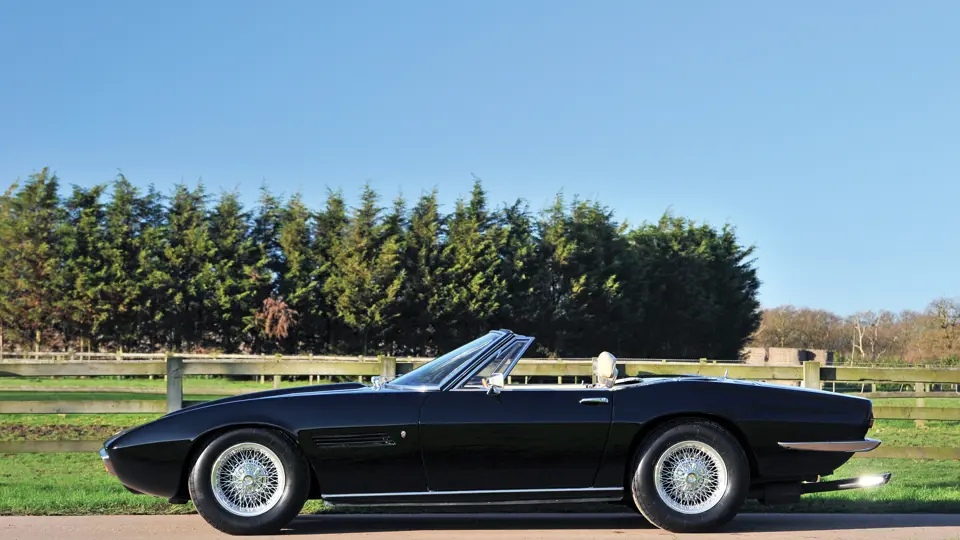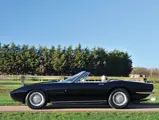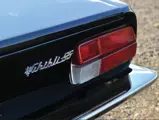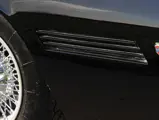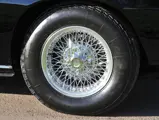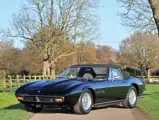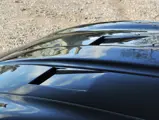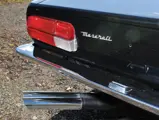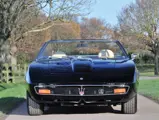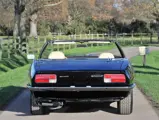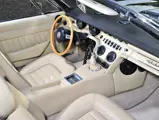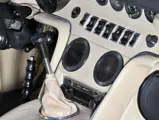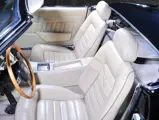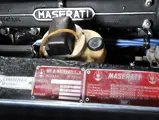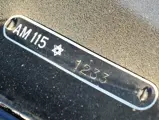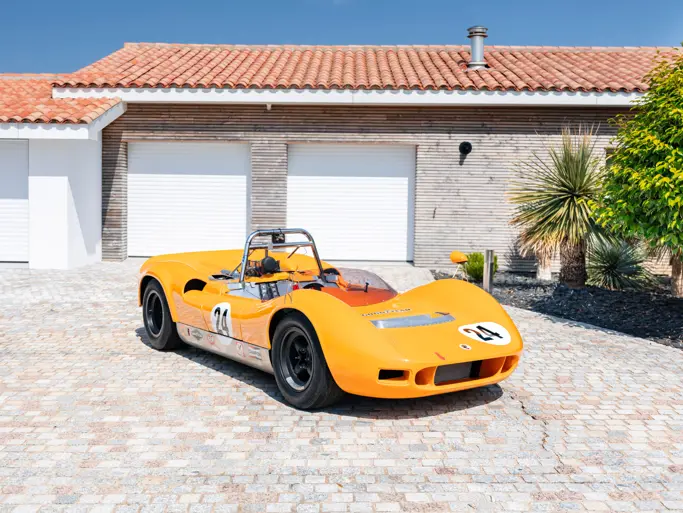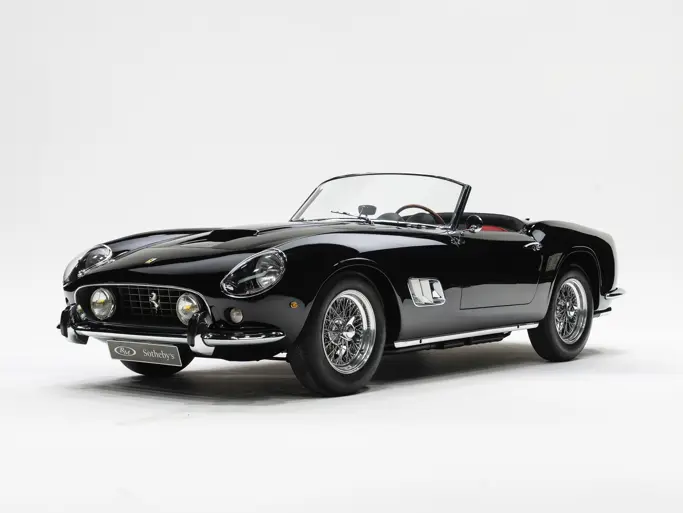
1970 Maserati Ghibli 4.7 Spyder
{{lr.item.text}}
€550,000 EUR | Sold
{{bidding.lot.reserveStatusFormatted}}
- One of only 125 original Spyders built
- Original interior; freshly detailed
- Factory air conditioning and Becker Europa radio
- Believed to have less than 33,000 original miles
- Fait partie des 125 exemplaires de Spyder authentiques
- Intérieur d'origine, récente remise à niveau
- Système d'air climatisé et autoradio Becker Europa d'origine
- N'aurait parcouru que 33 000 miles (53 110 km) d'origine
330 bhp, 4,719 cc DOHC V-8 engine, five-speed manual transmission, coil-spring independent front suspension, live rear axle with semi-elliptic leaf springs, and four-wheel hydraulic disc brakes. Wheelbase: 2,550 mm.
Moteur V-8, 4 719 cm3, 330 ch, deux ACT par banc, boîte manuelle à cinq rapports, suspension avant indépendante avec ressorts hélicoïdaux, essieu arrière rigide avec ressorts semi-elliptiques, freins hydrauliques à disque sur les quatre roues. Empattement: 2 550 mm
The Maserati Ghibli was the hit of the 1966 Turin Auto Show. The car was designed by the brilliant young Giorgetto Giugiaro whilst he was working for Ghia, and it was conceived as a luxurious yet sporting GT car that was ideal for jaunts across the continent. Production of the Ghibli began with a fastback coupé in April 1967, which was joined by the spyder in 1969. A race-bred, mid-mounted, 4,719-cubic centimetre V-8 engine with dry-sump lubrication and two chain-driven camshafts per cylinder bank powered the Ghibli, resulting in the car producing 330 horsepower.
The Ghibli, the first of the V-8 Maserati GT cars, could accelerate from 0 to 60 in 6.8 seconds and top out at 154 mph, which were both remarkable figures for the time. It could be ordered with either a five-speed ZF manual transmission or a three-speed Borg-Warner automatic. The car’s tubular frame was derived from those of the Mexico and the Quattroporte saloon. The Ghibli featured disappearing headlamps, leather sport seats, and either alloy wheels or the optional and desirable Borrani wire wheels. Production ultimately totalled to 1,149 coupés and only 125 spyders.
Although it was capable of supercar performance, the Ghibli is also known for its drivability at low and high speeds, as well as its predictable, balanced, and forgiving handling characteristics, which were features that could be attributed to near-perfect weight distribution and a low centre of gravity. According to a recent road test in Classic & Sports Car magazine, “The truth is, you could learn to drive in this car or you could learn your racing lines in it”.
The most desirable Ghiblis are the 125 factory-built spyders built, of which the car offered here, chassis number AM155S 1233, is one. According to information obtained from the Maserati factory, it was originally manufactured in December 1970 with the 4.7-litre engine, and it was originally finished in Verde Gemma over a white leather interior. It was delivered new to the United States but has most recently been part of an extensive private European collection.
The car has recently been refinished in black, but an inspection shows great authenticity throughout, particularly in the original, correctly coded Borrani chrome wire wheels, which are shod in Michelin 225/70 VR 15 tyres and include a matching spare in the boot. The chrome and Sekurit glass found throughout appear original, with only gentle use, and whilst the inside of the boot has been reupholstered, it presents nicely. The interior is believed to be wholly original, with consistent, gentle wear from use to all surfaces, but it displays a very nice dashboard and seats and is equipped with a Becker Mexico radio with its correct manuals and documents. Importantly, the under-hood plate and dashboard VIN tag are all clearly stamped with the correct chassis number, and a body number plate is also present.
Whilst the factory information lists the car as originally delivered with an automatic transmission, a five-speed manual gearbox is presently installed, marking a desirable upgrade for sporty driving in true Maserati fashion. The car’s odometer records just over 32,000 miles, which, according to the consignor, are believed to be from new.
This Spyder, which has recently been cosmetically detailed and freshened, is an ideal car to prepare as a driver, or it would serve as a good base for a concours-quality restoration of one of Maserati’s most impressive modern top-down grand tourers.
La Maserati Ghibli a tenu la vedette du Salon de Turin 1966. Dessinée par le v jeune et brillant styliste Giorgetto Giugiaro alors qu'il travaillait chez Ghia, elle était conçue comme une voiture de Grand Tourisme luxueuse et sportive, idéale pour sillonner le continent. La commercialisation de la Ghibli a démarré en avril 1967 sous la forme d'un coupé très effilé, suivi en 1969 par un Spyder. Elle était équipée d'un moteur V-8 racé, de 4 719 cm3, à lubrification par carter sec et distribution par deux ACT par banc de cylindres, commandés par chaîne. Il développait la puissance de 330 ch.
Première Maserati équipée d'un V-8, la Ghibli accélérait de 0 à 100 km/h en 6,8 secondes et atteignait 250 km/h en pointe, des chiffres remarquables pour l'époque. Elle pouvait être commandée soit avec une boîte manuelle ZF à cinq rapports, soit avec une transmission automatique Borg-Warner à trois rapports. La structure tubulaire de la voiture était dérivée de celle des Mexico et Quattroporte, et la Ghibli comportait des phares escamotables, des sièges sport en cuir, des jantes en alliage ou des Borrani à rayons proposées en option. La production a finalement totalisé 1 149 coupés et seulement 125 spyder.
Bien qu'elle ait présenté des performances de supercar, la Ghibli était aussi connue pour sa facilité de conduite à toutes les allures, de même que pour son comportement prévisible et équilibré, qu'elle devait à une répartition des poids presque parfaite et à un centre de gravité bas. Selon un essai récent publié dans le magazine Classic & Sports Car, « En fait, vous pourriez aussi bien apprendre à conduire dans cette voiture, qu'apprendre à négocier les bonnes trajectoires sur circuit ».
Les Ghibli les plus désirables sont les 125 exemplaires de Spyder produits par l'usine, dont fait partie la voiture proposée ici, châssis n°AM155S 1233. D'après les informations fournies par l'usine Maserati, cette voiture a été fabriquée en décembre 1970 avec un moteur 4,7 litres, et sa teinte d'origine était Verde Gemma avec intérieur en cuir blanc. Livrée neuve aux États-Unis, elle a intégré plus récemment une grande collection privée européenne.
Cette Ghibli a été repeinte plus récemment en noir, mais une inspection attentive révèle une grande authenticité à tous points de vue, particulièrement sur les jantes Borrani chromés à rayons, qui affichent le code correct et sont chaussées de Michelin 225/70 VR 15. Une roue de secours est présente dans le coffre. Les chromes et le verre Sekurit, peu abîmés, semblent d'origine, alors que l'intérieur du coffre a reçu un habillage neuf, de belle présentation. L'intérieur de l'habitacle est probablement complètement d'origine, avec une légère usure apparaissant de façon très répartie sur toutes les surfaces, et de très beaux sièges et un tableau de bord impeccable. La voiture est équipée d'un autoradio Becker Mexico, ainsi que de ses manuels et documents. La plaque rivetée dans le compartiment moteur et celle de tableau de bord montrent toutes deux le bon numéro de châssis, et un numéro de carrozzeria est également présent.
Alors que les informations de l'usine précisent que cette voiture a été livrée neuve avec une boîte automatique, elle est aujourd'hui équipée d'une boîte manuelle, ce qui est plus favorable à une conduite sportive, dans le plus pur style Maserati. La voiture n'affiche que 33 000 miles (53 110 km), chiffre qui, selon le propriétaire, correspondrait au kilométrage d'origine.
Récemment revue et remis à niveau sur le plan cosmétique, ce Spyder st une voiture idéale pour une utilisation régulière, ou peut servir de base à une restauration concours de l'un des cabriolets de Grand Tourisme les plus impressionnants de son époque.

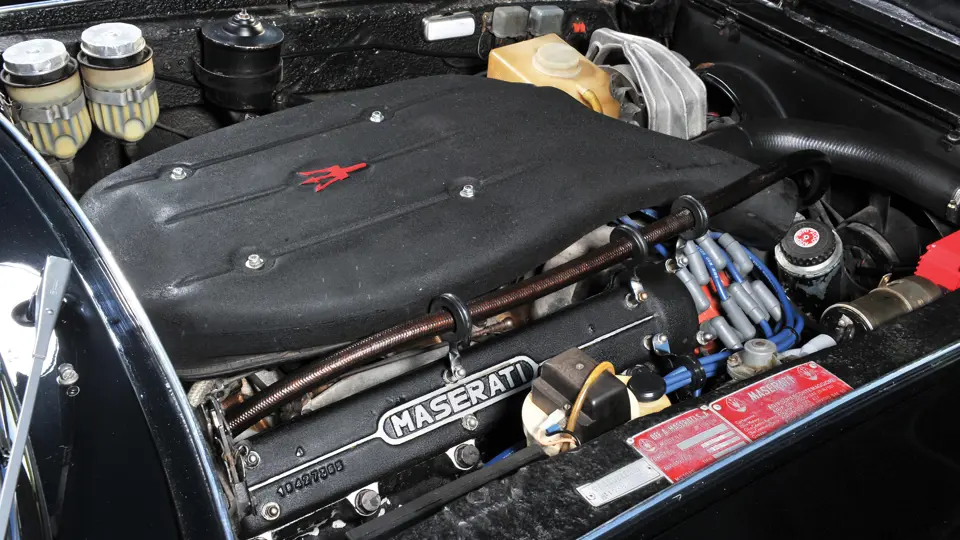


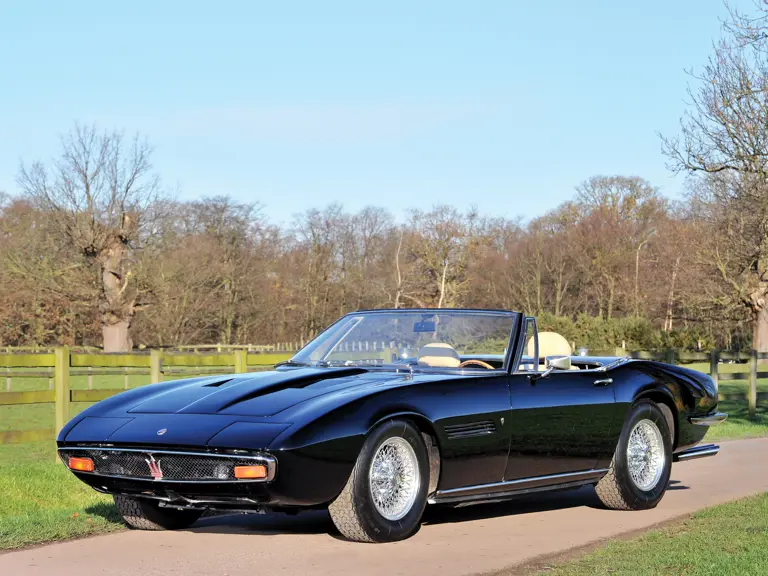
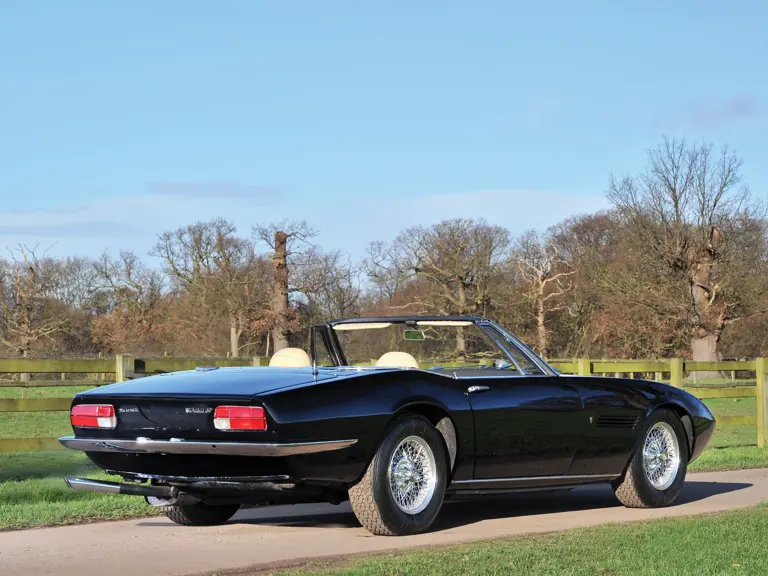
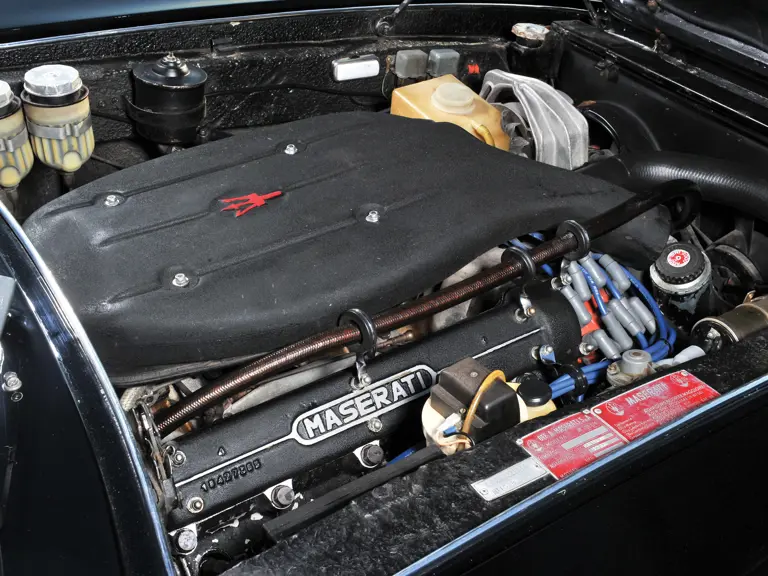
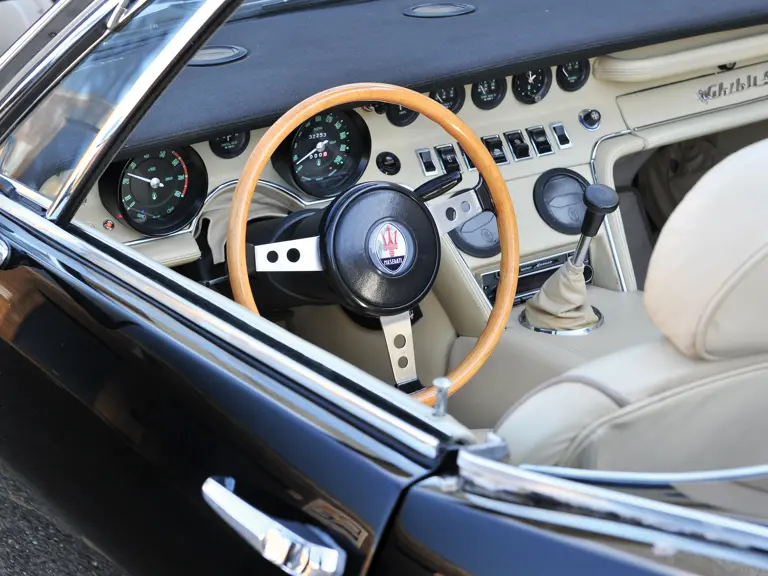
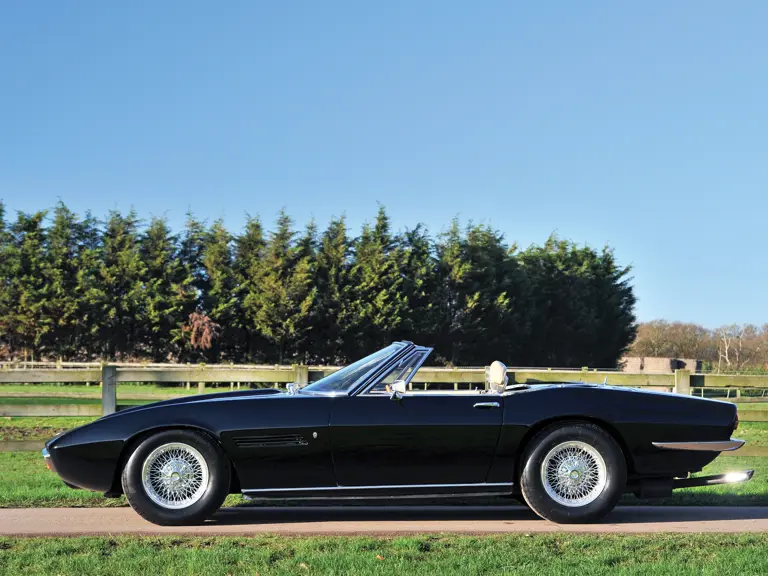
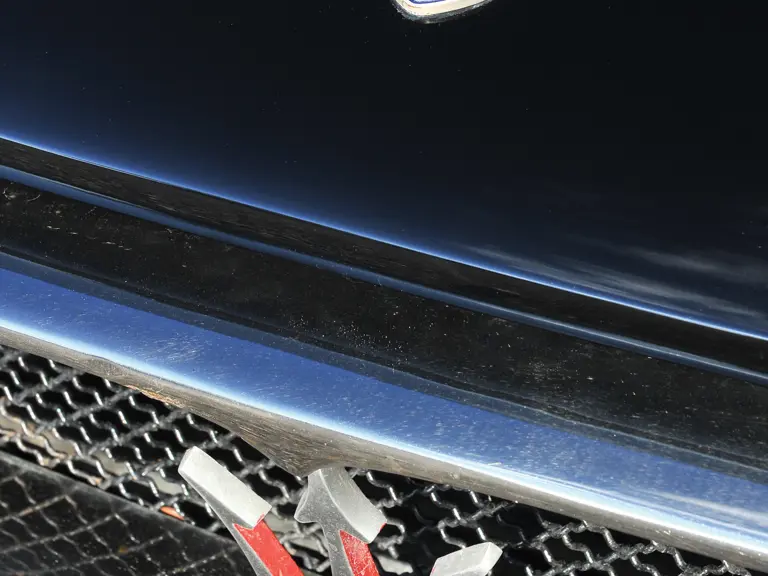

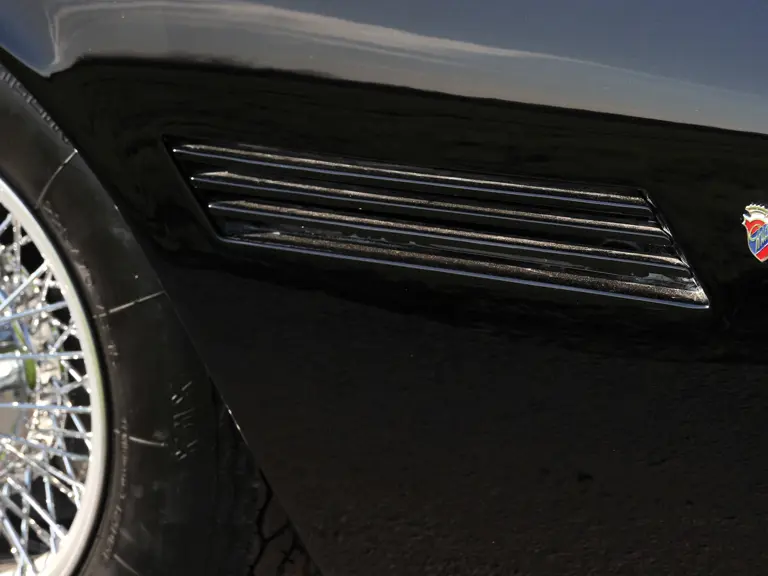
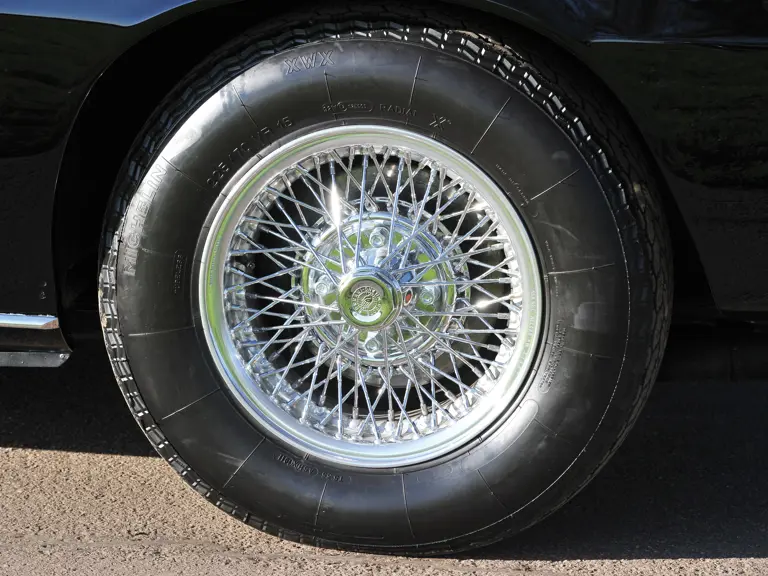
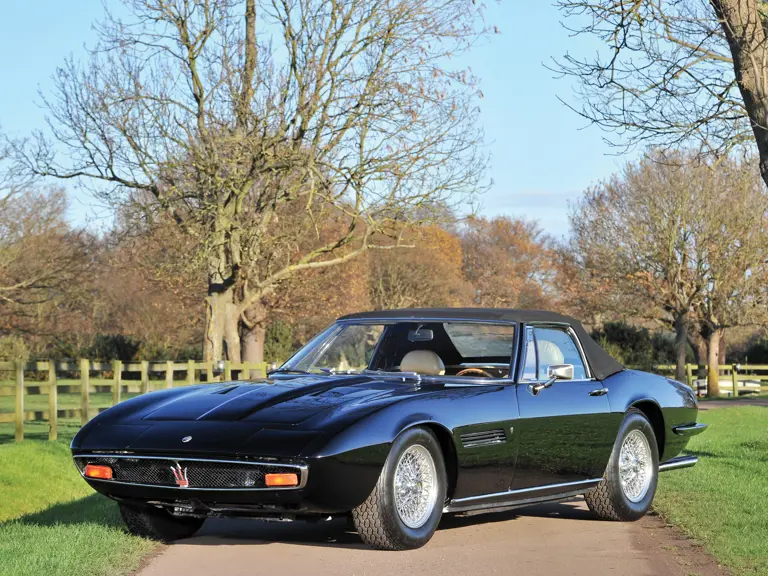
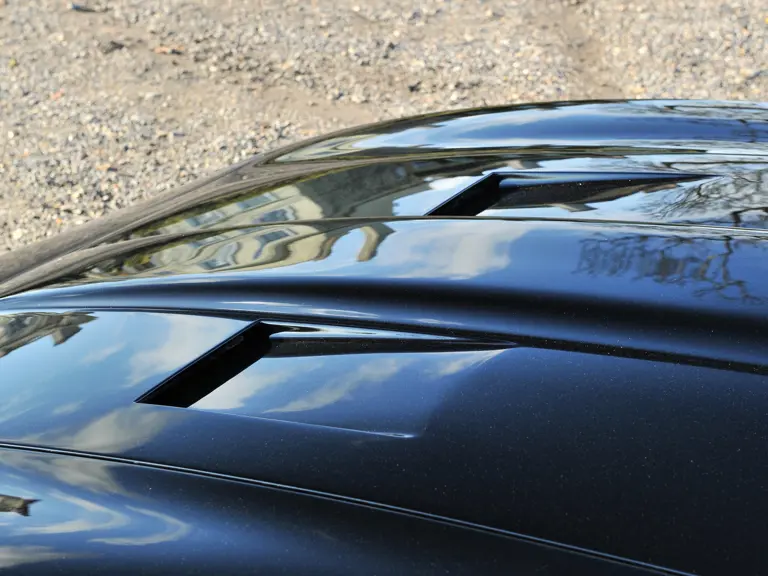
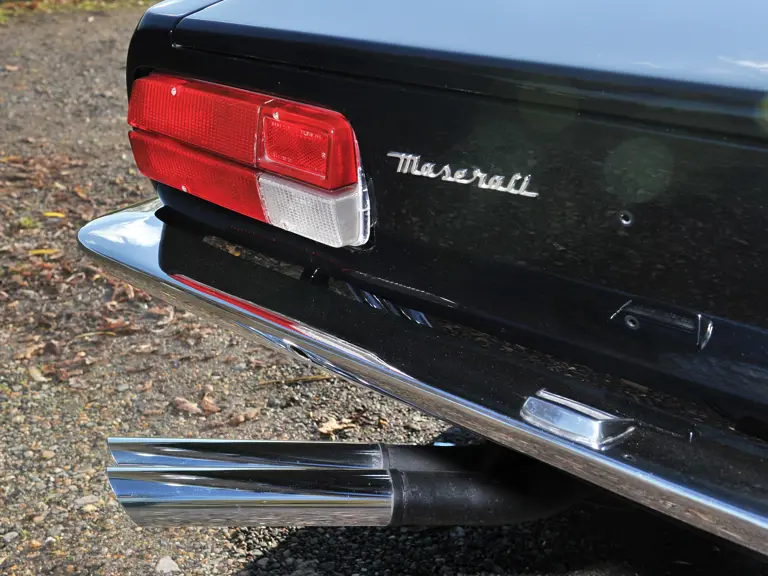
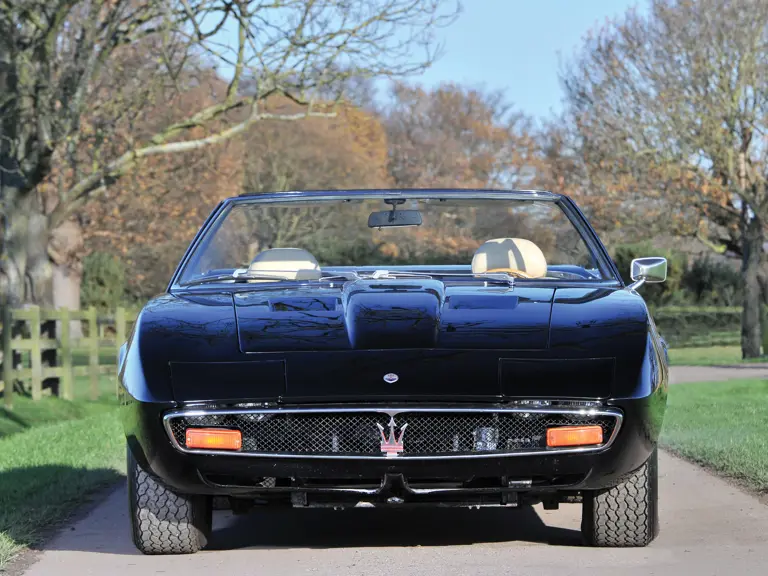
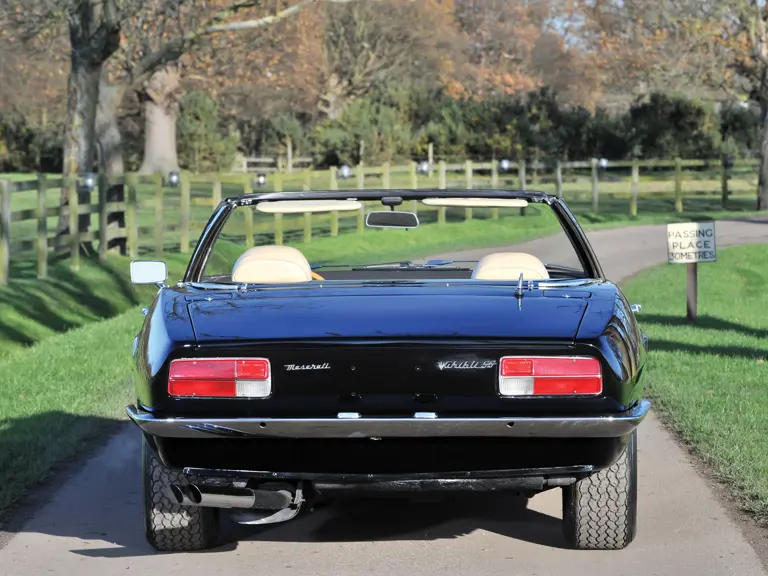

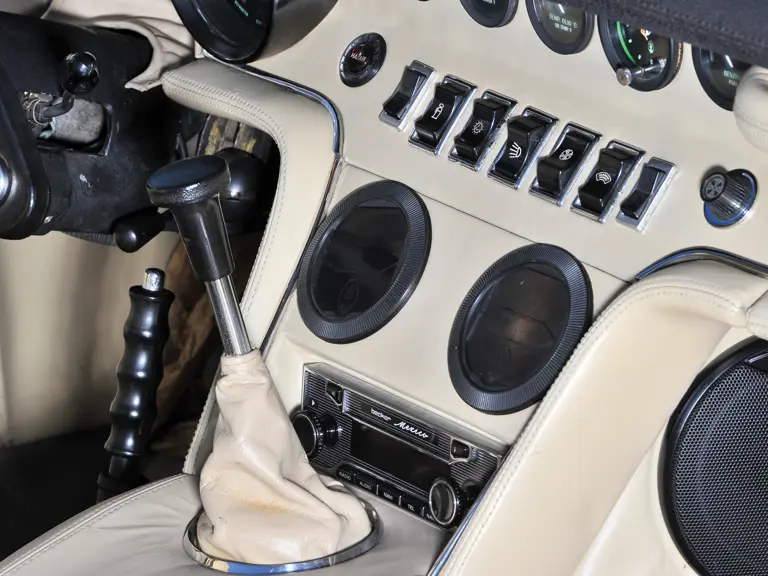
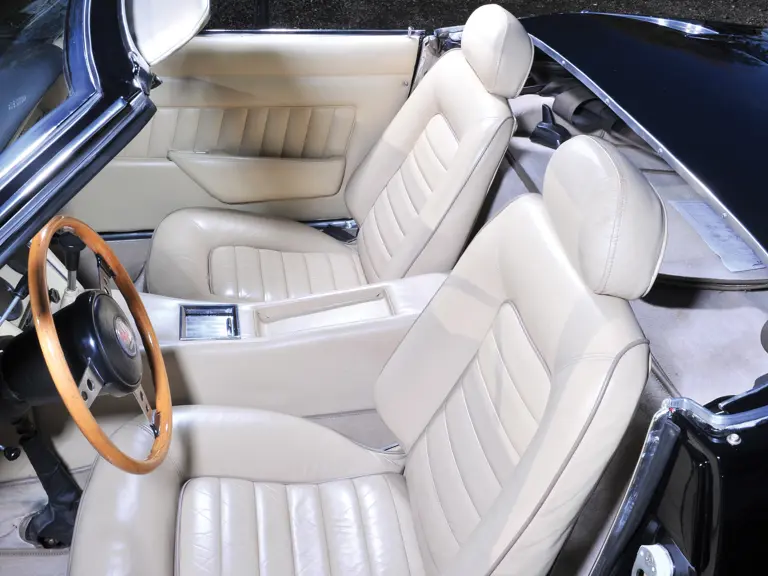
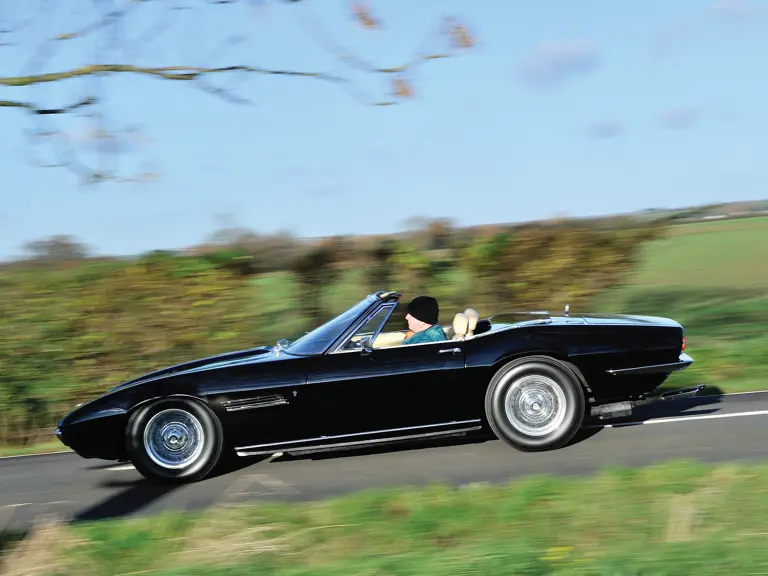
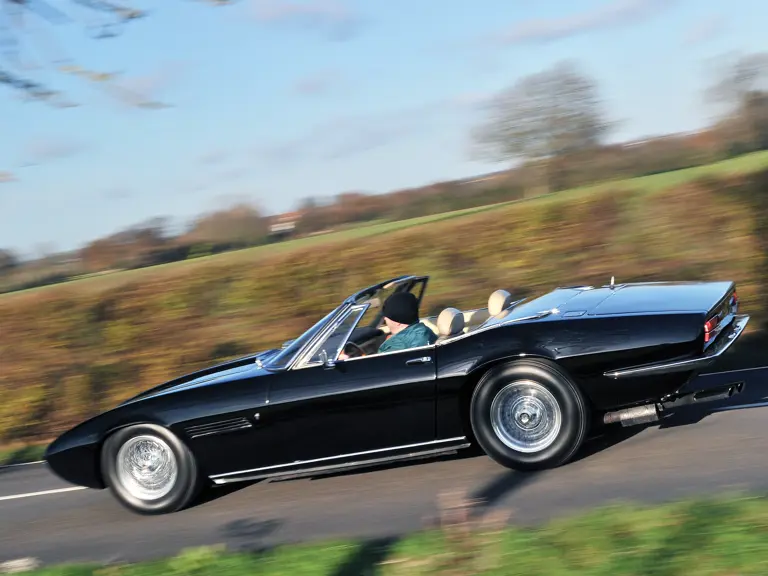


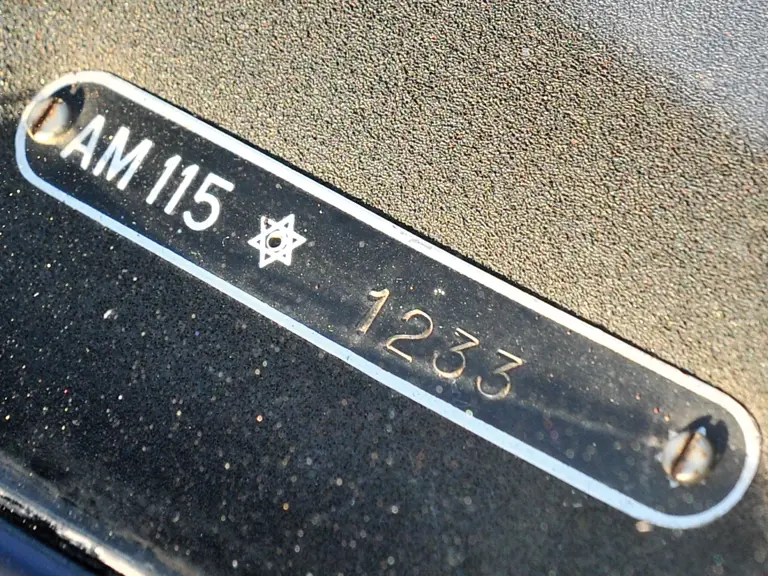
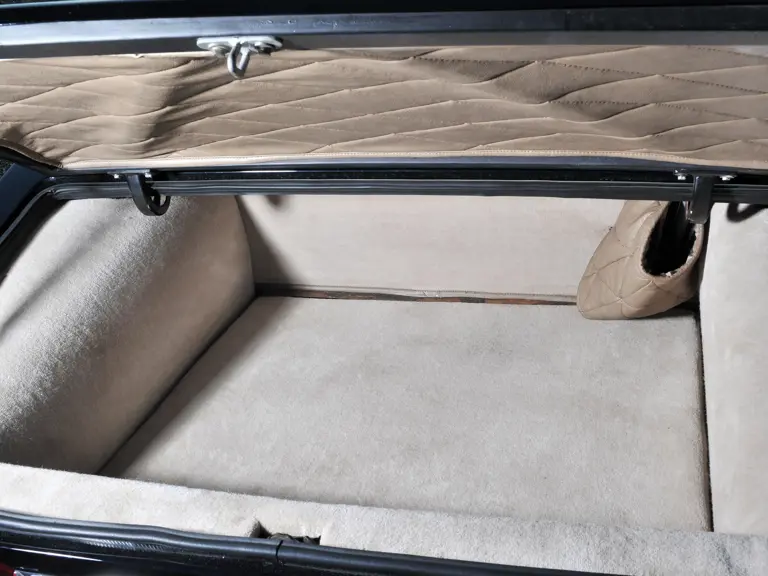
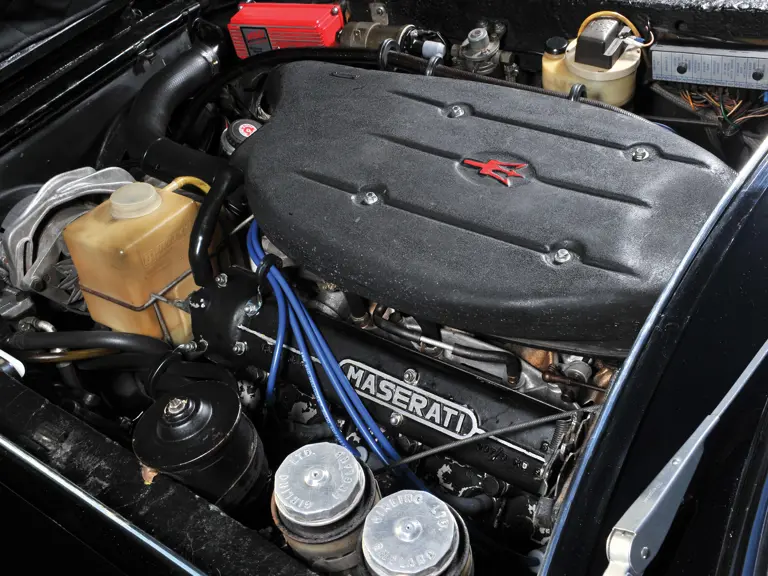
 | Paris, France
| Paris, France
